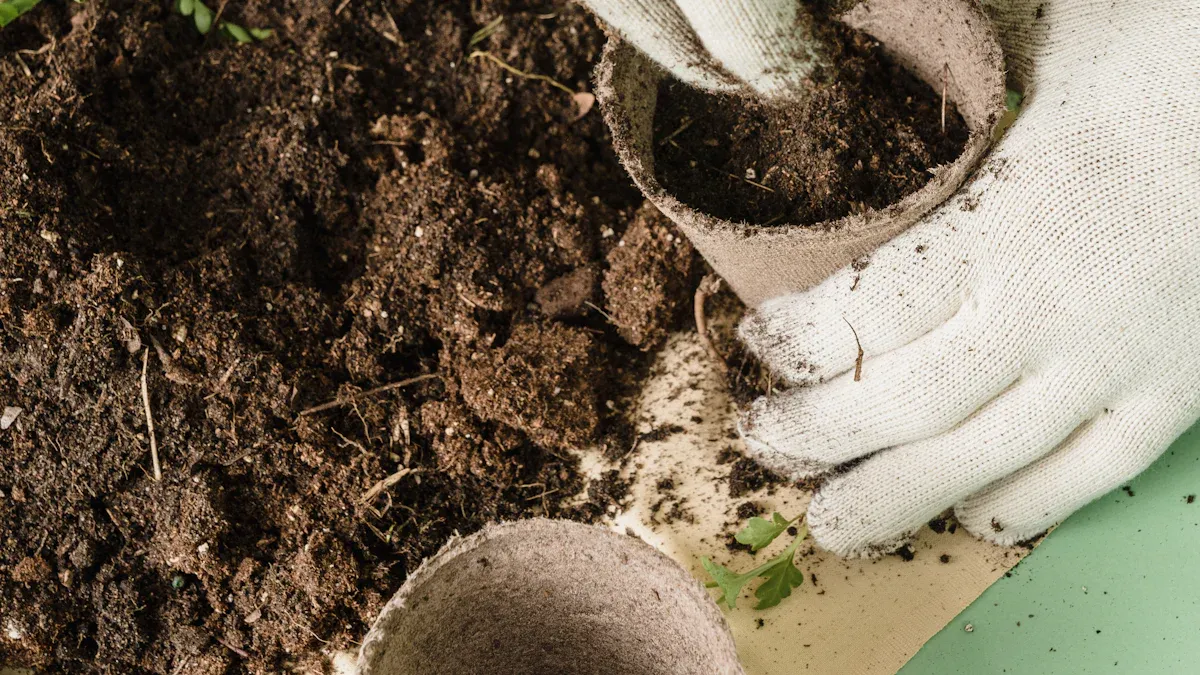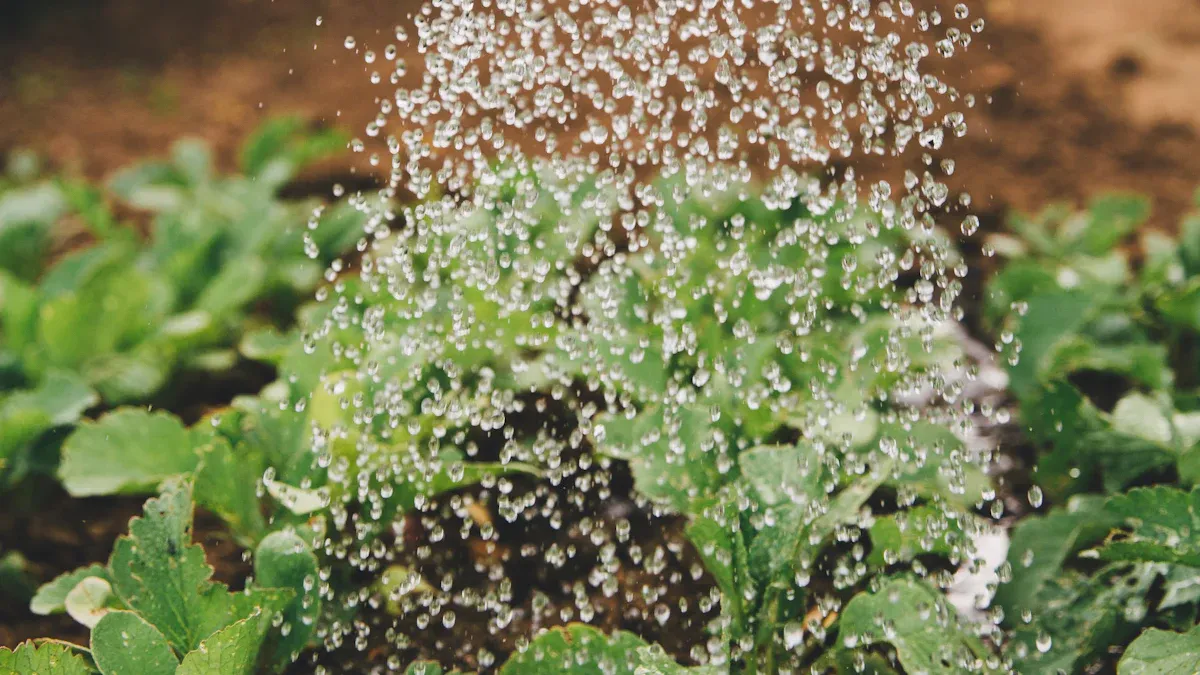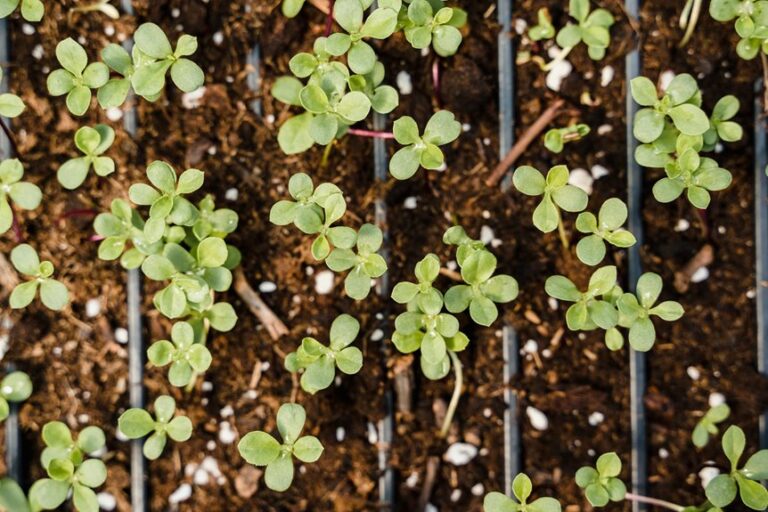
Wood ash is a versatile and sustainable resource you might not have considered for your garden and home, with numerous practical uses for wood ash. It contains essential nutrients like potassium, phosphorus, calcium, and magnesium. You can use wood ash in various practical ways, from enriching compost to deterring pests. Why not explore these benefits and make the most out of this natural resource?
Key Takeaways
Wood ash enriches your garden soil with essential nutrients like potassium, calcium, and magnesium, promoting healthier plant growth.
Using wood ash as a natural pest deterrent can protect your plants from slugs and snails without harmful chemicals.
Incorporating wood ash into your compost boosts microbial activity, leading to faster decomposition and improved compost quality.
What is Wood Ash?
Wood ash is the fine powder left after burning wood. It contains a variety of nutrients that can benefit your garden. When you use wood ash, you’re not just recycling waste; you’re enriching your soil with essential elements.
Nutritional Benefits
Wood ash is rich in several key nutrients that plants need to thrive. Here’s a quick look at what you can find in wood ash:
Calcium: 10-25%
Magnesium: 1-4%
Potassium: 5-15%
Phosphorus: 1-3%
These nutrients help improve plant growth and overall health. For instance, potassium promotes strong root development and enhances flowering.
Composition Overview
The composition of wood ash can vary depending on the type of wood burned. Research shows that hardwoods produce more ash and contain higher nutrient levels compared to softwoods. Here’s a quick comparison:
Type of Wood | Ash Production | Nutrient Levels |
|---|---|---|
Hardwoods | More ash (3X) | Higher nutrients (5X) |
Softwoods | Less ash | Lower nutrients |
Additionally, the sulfur content differs significantly. For example, seasoned birch has a sulfur content of 0.11%, while pine ash shows a higher sulfur content of 7142 ppm. This variability highlights the importance of knowing what type of wood you’re using.
Using wood ash as a natural fertilizer can be a great alternative to commercial options. While commercial fertilizers often have higher concentrations of nutrients, wood ash raises soil pH and provides a more balanced nutrient profile.
By incorporating wood ash into your gardening routine, you can enhance soil health and promote vibrant plant growth.
Practical Uses for Wood Ash: Fertilizer

Using wood ash as fertilizer is a fantastic way to boost your garden’s health. To apply it effectively, sprinkle a thin layer of wood ash over your soil. Aim for an application rate of about 20 pounds (or a 5-gallon pail) per 1,000 square feet each year. If you’re applying it directly to bare soil, you can use around 50-70 grams per square meter (1.7-2.4 ounces per square yard). Just remember, don’t overdo it! Limit your application to a maximum of 15 to 20 pounds per 1,000 square feet annually.
Wood ash can significantly improve your soil health. It raises the pH level, making acidic soils more neutral. This change enhances nutrient availability, especially potassium and phosphorus, which are vital for plant growth. A study showed that adding wood ash increased soil pH from 3.26 to 10.02 at a depth of 0.5 cm, depending on the amount applied. Over time, this boost in pH and nutrients leads to healthier plants and better yields.
Incorporating wood ash into your gardening routine not only recycles waste but also enriches your soil naturally. So, why not give it a try? Your plants will thank you!
Practical Uses for Wood Ash: Pest Control
Wood ash can be a powerful ally in your battle against garden pests. When you sprinkle wood ash around your plants, it acts as a natural deterrent. The fine particles create a barrier that pests find difficult to cross. This is especially true for slugs and snails, which can wreak havoc in your garden.
Wood ash acts as a physical deterrent by causing abrasion to the larvae’s cuticle, leading to desiccation. Additionally, it can interfere with chemical signals from host plants, hindering pest location. Ash can also suffocate insects by blocking their spiracles.
When it comes to slugs and snails, wood ash works wonders. Here’s how:
Desiccation: The salt in wood ash dries up the slime these pests secrete, making it hard for them to move.
Physical Barrier: Sprinkling wood ash creates a rough surface that slugs and snails dislike crossing.
A recent literature review found that wood ash can cause mortality in slugs and acts as a physical repellent. However, it requires reapplication after rain. Here’s a quick look at some findings on wood ash effectiveness:
Study | Findings |
|---|---|
Literature Review | Wood ash can cause mortality in slugs and acts as a physical repellent, but requires reapplication after rain. |
Nechev’s Study | Higher concentrations of cobalt in wood ash can be toxic to plants and animals, indicating potential risks in its use. |
Josh Gardens’ Insights | Wood ash acts as a desiccant, deterring slugs and snails by drying up their slime, but needs reapplication after rain for effectiveness. |
Using wood ash for pest control is a safe and effective method. It’s a great way to protect your plants without relying on harsh chemicals. So, next time you have some wood ash on hand, consider using it to keep those pesky slugs and snails at bay!
Practical Uses for Wood Ash: Soil Amendment

Wood ash can be a game-changer for your garden soil. One of its primary benefits is improving soil pH. If your soil is too acidic, wood ash can help balance it out. Most vegetables thrive at a pH of 6.5 to 7.0. If your soil pH is below this range, sprinkle about two ounces of wood ash per square yard (or 50-70 grams per square meter) over the surface and rake it in. For best results, apply it on a still day during winter, and don’t forget to wear gloves for protection!
Remember, moderation is key! Too much wood ash can lead to nutrient imbalances.
Now, let’s talk about nutrient availability. Wood ash is rich in essential nutrients like potassium, calcium, and phosphorus. By weight, it contains about 5 to 7 percent potassium and 25 to 50 percent calcium. This makes it an excellent liming material. When you add wood ash to your soil, you raise its pH to a neutral level, which benefits many plants. However, be cautious—excessive potassium can lead to nitrogen deficiency, which shows up as pale leaves and stunted growth.
To sum it up, using wood ash as a soil amendment not only helps correct acidity but also enhances nutrient availability. Your plants will appreciate the extra care!
Practical Uses for Wood Ash: Compost Booster
Using wood ash in your compost can give it a significant boost! When you mix wood ash with your compost pile, you add valuable nutrients that help improve the overall quality of your compost. Here’s how to do it effectively:
Add small amounts of cooled ashes to a new or uncooked compost pile.
Limit wood ash to no more than 5% of your compost to avoid raising the pH too much.
Wear gloves, eye protection, and a mask when handling wood ashes for safety.
Sprinkle ash onto the compost pile along with the right ratio of brown (carbon-rich) and green (nitrogen-rich) materials.
For hot compost piles, add a small amount of ash monthly. For cold piles, consider adding it in the fall or late summer.
Avoid mixing ashes with nitrogen fertilizers to prevent ammonia gas release.
Mixing wood ash into your compost not only enriches it but also enhances microbial activity. Studies show that adding wood ash can improve the composting process by reducing odors and accelerating the breakdown of organic materials. For instance, research by Koivula et al. (2004) found that adding wood ash improved oxygenation and reduced harmful gases, leading to faster decomposition.
Here’s a quick look at some findings on how wood ash affects microbial activity:
Study | Findings | Impact on Microbial Activity and Decomposition |
|---|---|---|
Koivula et al. (2004) | Improved oxygenation and reduced odors | Accelerated degradation of organic compounds |
Amlinger et al. (2007) | Enhanced nutrient content in compost | Improved soil quality and microbial biomass |
Insam (1990) | Activation of soil microbiota | Enhanced biomass depending on organic matter quality |
By incorporating wood ash into your compost, you’re not just recycling waste; you’re creating a nutrient-rich environment that supports healthy microbial life. Your plants will thrive on the benefits of this natural compost booster!
Practical Uses for Wood Ash: Ice Melter
When winter hits and ice covers your driveway or walkway, wood ash can come to the rescue! You can use it as a natural ice melter that’s both effective and eco-friendly. Here’s how to do it:
Sprinkle wood ash directly onto the icy areas.
Use it hot for even better results. Hot wood ash can melt ice quickly.
Watch the magic happen! The fine particles of ash dissolve and lower the freezing point of the ice, much like salt does.
Why choose wood ash over commercial ice melts? Well, wood ash is a natural byproduct that’s less harmful to the environment. Many chemical ice melts contain damaging chlorides that can harm plants and soil. In contrast, wood ash contains potassium, which is beneficial for your garden. Plus, its darker color helps absorb heat from the sun, making it even more effective at melting ice.
Using wood ash not only keeps your pathways safe but also promotes sustainability. You’re recycling a waste product while protecting the environment. So, next time you face icy conditions, grab that wood ash and give it a try! Your garden and the planet will thank you. 🌍✨
Practical Uses for Wood Ash: Natural Cleaner
Wood ash can be a fantastic natural cleaner for your home. You might be surprised to learn that it works wonders on glass surfaces! Here’s how you can use it effectively:
Place wood ash in a non-flammable bucket and let it sit for at least three days to ensure all embers are extinguished.
Scoop about 1/2 cup of ash into a smaller container, leaving behind any unburned debris.
Add enough water to the ash to create a smooth paste, stirring until well mixed.
Dampen a towel and dip it into the ash paste, then rub it on the dirty glass, focusing on heavily soiled areas.
Use another damp rag to wipe away any remaining film on the glass.
This method not only cleans but also leaves your glass sparkling!
Now, let’s talk about car headlights. Over time, headlights can become cloudy and dim, making it hard to see at night. Wood ash can help restore their clarity. Just follow these simple steps:
Mix wood ash with a bit of water to create a paste.
Apply the paste to the headlight lens using a soft cloth.
Rub gently in circular motions for a few minutes.
Rinse with water and dry with a clean cloth.
Using wood ash for cleaning is a great way to keep your home and car looking their best while being eco-friendly. So, next time you have some wood ash on hand, don’t toss it out! Instead, put it to work as a natural cleaner. Your glass surfaces and headlights will thank you! ✨
Practical Uses for Wood Ash: Absorbent
Wood ash is not just a gardening tool; it’s also a handy absorbent for spills around your home. You can use it to tackle various messes, making it a practical addition to your cleaning supplies. Here’s how it works:
Oil Spills: If you spill oil while working on your car, sprinkle wood ash over the area. It effectively absorbs the oil, helping to clean up your driveway or garage floor. Many people have found it works as well as commercial products for this purpose.
Foul Odors: Place wood ash in your refrigerator to eliminate unpleasant smells, much like baking soda does. It can also neutralize odors in kitchens and bathrooms due to its alkaline nature.
General Spills: Whether it’s a drink spill or something greasy, wood ash can help soak up the mess. Just sprinkle it on the spill, let it sit for a bit, and then sweep it away.
Some users have even compared wood ash to other absorbents like sawdust. While sawdust is popular for oil spills, wood ash might be just as effective. However, some folks worry about the cleanup process afterward. It’s always good to test a small area first to see how it works for you.
Using wood ash as an absorbent not only helps you clean up but also recycles a natural resource. So, next time you have a spill, reach for that wood ash instead of harsh chemicals! 🌱✨
Practical Uses for Wood Ash: De-skunking Pets
If your furry friend has had an unfortunate encounter with a skunk, wood ash can come to the rescue! This natural remedy helps neutralize those stubborn odors. Here’s how you can use it effectively:
Dust your pet: Gently sprinkle wood ash over your pet’s fur, focusing on the areas that smell the strongest. The ash will absorb the odor and help mask the skunk spray.
Let it sit: Allow the wood ash to sit for about 15-20 minutes. This gives it time to work its magic.
Brush it out: After the waiting period, brush your pet thoroughly to remove the ash. You might want to do this outside to avoid a mess indoors!
Wood ash is recognized as a highly effective natural odor eliminator, especially for strong smells like skunk spray. However, while it can help, it’s worth noting that other natural remedies might work even better. For example, specialized products like skunk-off spray are designed specifically for this purpose and can provide more reliable results.
So, if you find yourself in a skunk situation, don’t panic! Grab some wood ash and give it a try. Your pet will appreciate your efforts to keep them smelling fresh, and you’ll feel good about using a natural solution. 🌿🐾
Practical Uses for Wood Ash: Crafting Material
Wood ash isn’t just for the garden; it can also be a fantastic crafting material! One of the most exciting uses is in pottery. You can incorporate wood ash into your pottery glazes in several ways:
You can add wood ash unwashed or washed to a glaze mix as a dry ingredient.
Mix it with water to create a wash, which you can spray or brush over a glaze.
Remember, each batch of wood ash may vary, so you might need to analyze it to adjust the oxides for consistency.
Using wood ash in pottery has a long history. For thousands of years, artisans have created unique glazes from different plant ashes. Each type of ash brings its own chemical composition and mineral content, giving your pottery a distinct look. When you heat wood ash to high temperatures, it melts into a beautiful glaze, enhancing your creations.
But that’s not all! You can also use wood ash in other creative ways:
Soap Making: Wood ash can be used to create lye, an essential ingredient in traditional soap making.
Natural Paint: Mix wood ash with water and natural pigments to create eco-friendly paint.
Textiles: Some crafters use wood ash to dye fabrics, producing unique colors.
So, next time you have some wood ash lying around, think about how you can turn it into something beautiful! Whether you’re glazing pottery or trying your hand at soap making, wood ash can spark your creativity. 🌟
Practical Uses for Wood Ash: Garden Aesthetics
Wood ash can add a unique touch to your garden while benefiting your plants. You can use it in several decorative ways that enhance both the look and health of your garden. Here are some ideas:
Mulch Alternative: Spread wood ash around your plants as a decorative mulch. It not only looks great but also helps retain moisture in the soil.
Pathway Material: Create charming pathways by mixing wood ash with gravel. This combination provides a rustic look while improving drainage.
Artistic Touches: Use wood ash to create artistic designs in your garden beds. You can mix it with water to make a paste and apply it to stones or garden ornaments.
But the benefits of wood ash go beyond aesthetics. It contains many of the 13 essential nutrients needed for plant growth, such as calcium, potassium, and magnesium. By acting as a liming agent, wood ash helps neutralize acidic soils and raises soil pH. This means your plants can access nutrients more easily.
Here’s how wood ash improves plant growth:
It increases soil fertility by enhancing the activity of soil microorganisms.
It provides high solubility and availability of macronutrients, particularly potassium, magnesium, and calcium.
Using wood ash in your garden not only beautifies your space but also supports healthy plant growth. So, why not sprinkle some around and watch your garden thrive? 🌱✨
Wood ash offers many practical uses that can enhance your garden and home. Consider these benefits:
Enrich your compost with added nutrients.
Repel pests like slugs and snails by spreading ash around plants.
Boost plant growth, especially for calcium-loving varieties.
By reusing wood ash, you promote sustainability and reduce waste. So, why not give it a try? Your garden and the environment will thank you! 🌱✨
FAQ
What types of wood ash are best for gardening?
Hardwood ash is best due to its higher nutrient content. Softwood ash can also work but has lower nutrient levels.
Can I use wood ash from treated wood?
No, avoid using ash from treated wood. It may contain harmful chemicals that can harm your plants and soil.
How often should I apply wood ash to my garden?
Apply wood ash once a year, limiting it to 15-20 pounds per 1,000 square feet to prevent nutrient imbalances.


